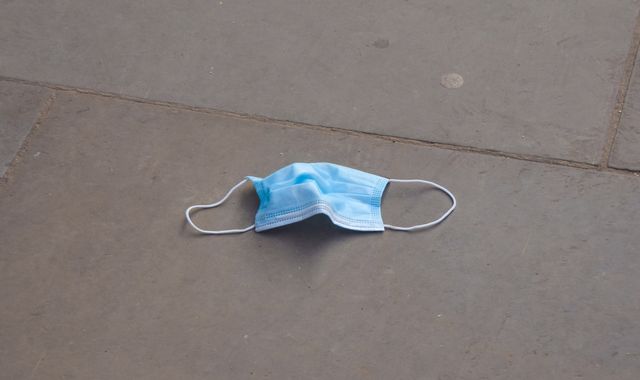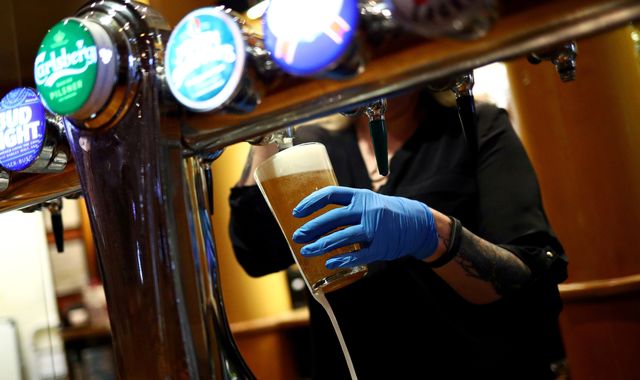COVID-19: ‘Nowhere near over’ – here’s why lockdown must be eased slowly and cautiously
Written by News on 22/02/2021
The vaccines are good, but they’re not perfect. And that’s the peril in lifting lockdown too quickly.

New data from Public Health England suggests a single dose reduces the risk of serious disease by 75%. That would significantly reduce hospital admissions and deaths.
You would expect a second dose to have an even bigger impact. But some risk of a bad outcome is likely to remain.
Follow live coverage on Sky News as the PM leads a Downing Street news conference at 7pm
So reducing transmission of the virus across the population is crucial – whether that is through herd immunity from the vaccine or previous infection, or through controls on contact between people.
So what do we know about the vaccine’s effect on transmission?
The latest evidence from the SIREN study of health workers, who were tested for COVID several times a week, found a single dose reduced the chances of infection – with or without symptoms – by 70%.
The impact on asymptomatic cases is certainly encouraging – these are the people who may unwittingly spread the virus because they don’t know they have it.
But it’s not proof that the vaccines stop transmission. That will come from further studies of their viral load and whether they spread the virus to close contacts, such as people they live with.
Even if the vaccines reduce transmission of the virus to low levels, there will still be a large pool of people who are still unprotected – even after the vaccine rollout.
A fifth of the population are children and too young at present to have the jab. And then there are those who refuse the vaccine – with the high rate of hesitancy in younger care workers a signal of concern as it’s rolled out to a broader age range.
And what about natural immunity from infection?
It’s likely that just 10-20% of the population has antibodies from the disease, with an additional, unknown number having T-cells.
So herd immunity will be hard to achieve, however impressive the vaccine rollout is.
That’s why scientists want lockdown to be lifted so cautiously.
The priority has always been reopening schools to all children, not just those of key workers. It’s essential for their education and mental health.
But thereafter scientists advising the government want lockdown to be lifted in steps, with a gap of four to five weeks in between to gauge what impact there has been on the spread of the virus.
Any faster and there is a risk of a sharp rebound.
Sir Patrick Vallance, the chief scientist, told a news briefing: “The sooner you open up everything, the greater the risk of a resurgence. The slower the better.”
SAGE, the government’s scientific advisory committee, has modelled different scenarios for lifting lockdown.
Even under the most optimistic scenarios it estimates there could be at least a further 30,000 COVID deaths
Indoor mixing – even just one guest per household per day – is a particular concern and would lead to a “large” increase in transmission, the scientists warn.
There are significant uncertainties for the weeks ahead: the impact of warmer weather, any waning of immunity, complacency about any ‘rules’ because of the vaccine rollout, and the emergence of new variants that reduce the effectiveness of the jabs.
The models don’t account for those, a further reason for caution.
There are still upwards of 10,000 new COVID cases a day. The sooner lockdown is eased the higher the ‘baseload’ of virus still out there. And every contact between people is an opportunity for it to spread.
The epidemic is nowhere near over.
And while it’s tempting to put dates in your diary for meeting up with family, seeing friends in the pub and heading abroad for a much-needed holiday, Sir Patrick has a warning: “Look at data, not dates”.
(c) Sky News 2021: COVID-19: ‘Nowhere near over’ – here’s why lockdown must be eased slowly and cautiously







